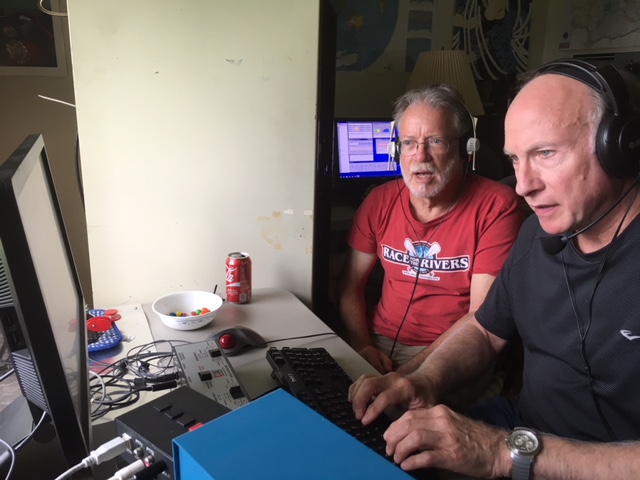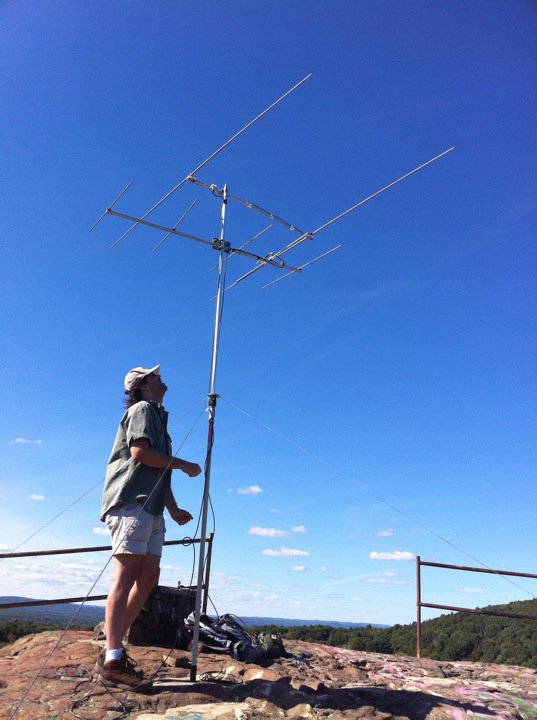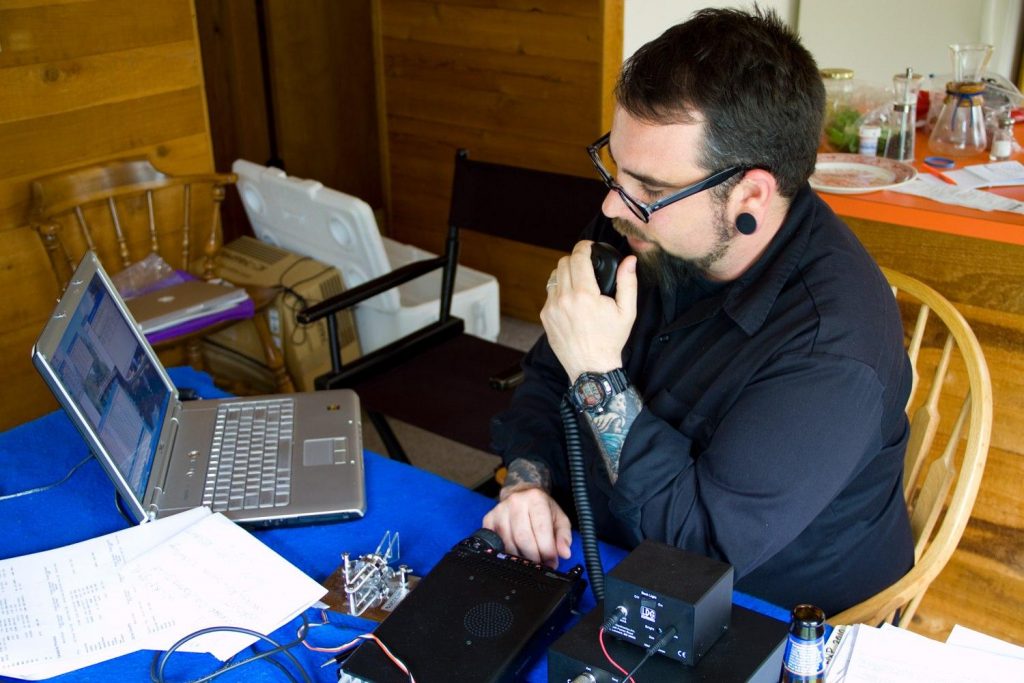Contesting is one of Ham Radio’s most popular on-air activities. These are operating events with a time limit—anywhere from an hour or two to 48-hour events spanning an entire weekend. The object is to make as many two-way contacts as possible with as many different locations as possible—such as DXCC entities, states, counties, ARRL sections, or grid squares—within the contest period. It offers the chance to focus on several aspects of the hobby: technical skills, efficient operating, and accurate traffic handling. Contesting makes you a better operator.
All classes of Amateur Radio operator can benefit from the skills learned in contesting, and you don’t need a large station with multiple towers and giant Yagis to gain valuable experience and have fun doing it. If you have a Technician Class license, here are several ways you can participate in Ham Radio contesting.
DahDiDahDit DahDahDiDah
Many Hams forget that Technicians have lots of HF privileges on CW. Even in this period of an extended solar minimum, Technicians can operate CW on 80, 40, 15, and 10 meters. There’s a lot of activity on those bands, especially during domestic contests like the ARRL November Sweepstakes or the North American QSO Parties. To get you started, there are organizations devoted to teaching you CW on the air, such as CW Ops and the Straight Key Century Club. Both organizations regularly run casual competitive events to help new CW operators get some time and practice under their belt.
10 Meters: The Technician’s Gateway to HF
Don’t forget that Techs have SSB, CW and data privileges on 10 meters. Even though we are at the bottom of the solar cycle right now, 10 meters still shows signs of life, especially when activity is high during a contest. Summer months are the peak of sporadic-E propagation on 10 meters, which is not dependent on the 11-year solar cycle. The major competitive events, sponsored by the ARRL and CQ Magazine, offer the option of single-band entries, so Technicians can get on 10 meters and participate via the single-band route.
In addition, ARRL offers the 10 Meter Contest every December. Other 10 meter events include the North American QSO Parties (SSB, CW, and RTTY, each twice per year) and the FT8 Roundupheld the first weekend in December. The ARRL RTTY Roundup in January also offers some possibilities for QSOs on 10 meters. Check out this article in QST written by weak-signal elder statesman Joe Taylor, K1JT, on using FT8 in the RTTY Roundup.
While bigger antennas will always fare better, especially during periods of low sunspot activity, don’t let that deter you from trying. The bands have a funny way of opening during competitions, and a simple half-wave dipole for 10 meters is less than 17 feet long and can be just 10-15 feet off the ground to get some directional characteristics. Higher is better, though!
Technicians have access to a lot of spectrum, including several segments of most HF bands. There’s a lot of contesting that Techs have access to! Here’s a band chart:
Major contests sponsored by CQ Magazine also offer a “rookie” category overlay, which is for Hams licensed fewer than three years.
The ARRL also offers the Rookie Roundup, which is focused on Hams who have been licensed for three years or less or who are new to the mode being used. The Rookie Roundup runs three times a year— once each for CW, SSB, and RTTY.
Finally, another option to experience contesting on HF is to become part of a multi-operator effort during an event. As long as an operator with a General Class or Extra Class license is there to function as a “control operator” and make sure you don’t violate FCC regulations, you can operate HF outside of your Technician Class privileges. You won’t be able to use your own call, though. Check with your local club to see if anybody would be interested in trying a contest operation. If not, there’s a list of regional contesting clubs available on the ARRL website. Reach out to one of them. The members of those clubs would be happy to help you explore contesting.

VHF and Up
There are plenty of contests that cater to the bands above 50 MHz, where Technicians have full privileges. The ARRL sponsors a VHF contest in January, June and September, and CQ Magazine sponsors one in July. There are also VHF/UHF “sprint” contests held in the spring and fall. Sprints are four hours long and focus on a specific band each week.
To get on the air for these events, you’ll need an all-mode, all-band transceiver that covers at least 6 and 2 meters, and a decent antenna. Yagi or quad antennas on 2 meters are relatively small; a 5-element 2 meter Yagi can be as short as 4 feet. A 3-element Yagi for 6 meters can fit on a 6-foot boom with elements under 10 feet long. You’ll also need to know about special propagation modes that can occur on VHF and UHF. See my previous blog for a primer on VHF propagation.

Participation in VHF+ events doesn’t have to be from your home station. CQ Magazine has a Hilltopper category, and ARRL offers the Single Operator Portable category. Pack up your portable antennas and head for a high point in your area and see how you do!
State QSO Parties
State QSO Parties are a lower-pressure way to enjoy contesting. Most states offer a QSO party or are combined into larger parties, such as theCalifornia QSO Party, New England QSO Party, or the 7-Land QSO Party. You can participate in your state’s QSO party from a home station or take a trip to a rare county in your state and hand out a juicy contest multiplier. Some QSO parties permit contacts on the VHF bands, others do not.

You can also try and work stations during their own QSO party. Some, such as the New England or Florida QSO Parties, are large affairs with lots of activity. See how many different stations in different counties you can talk to. Find a great overview of state QSO parties by Hal Kennedy, N4GG, here.
Ham Radio contesting is fun, develops critical skills that apply to all areas of radio, and helps you become a better operator. Technicians have a lot more opportunity to participate than most Hams think. If you are looking for a way to expand your enjoyment of radio, try developing your contesting skills. You’ll be surprised at how much enjoyment there is beyond your local repeater.

